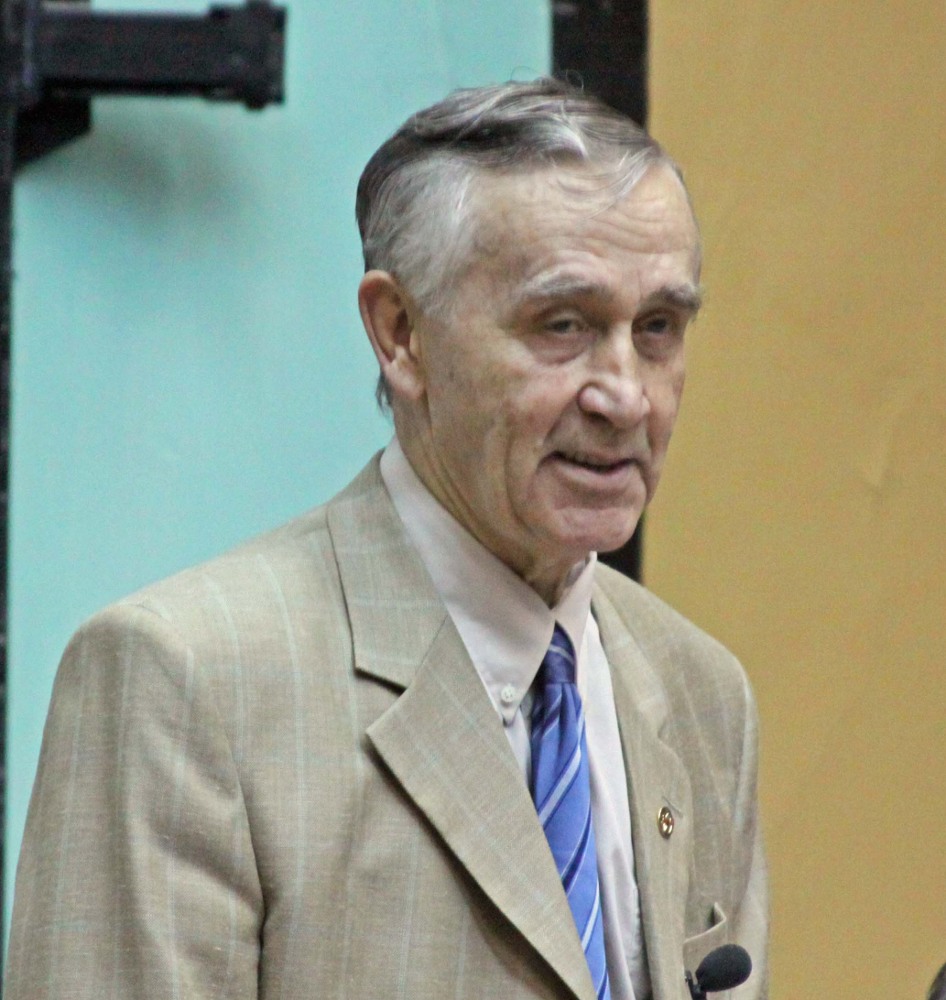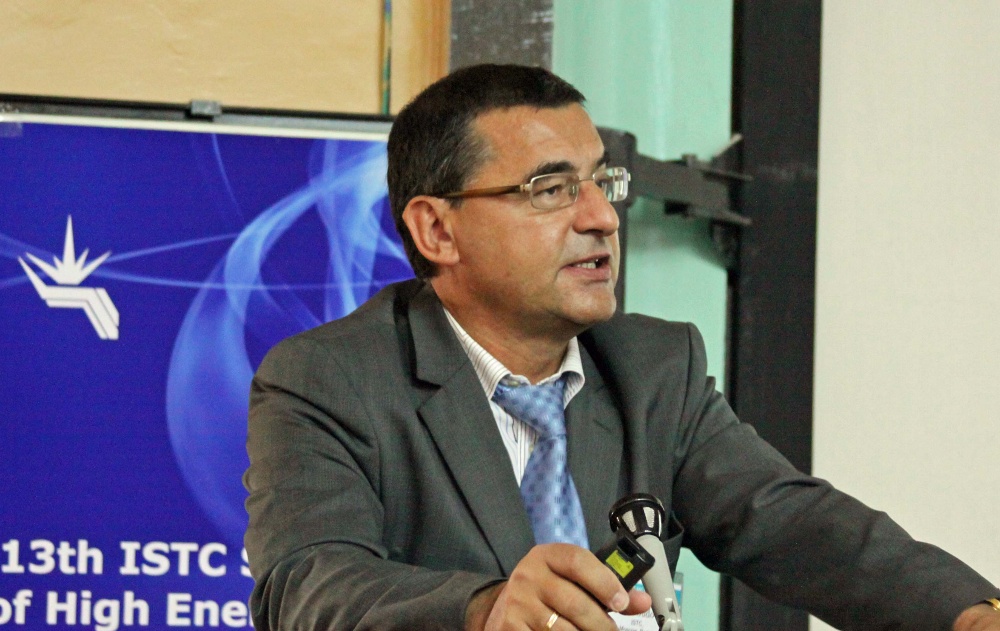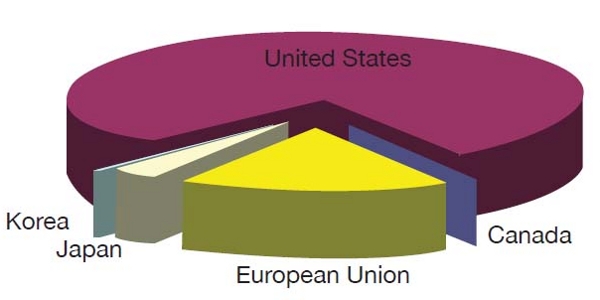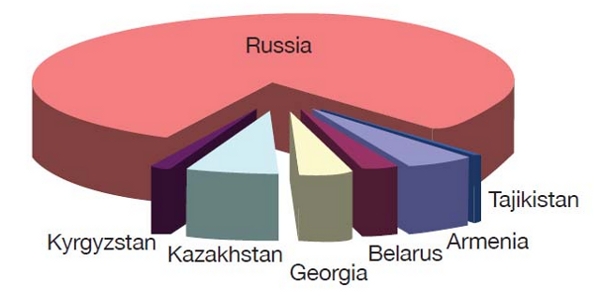Director's Corner
14 October 2010
 Barry Barish |
Novosibirsk revisited: integrating former weapons scientists
Last week I wrote about the Budker Institute for Nuclear Physics in Novosibirsk, Russia, the venue for the 13th CERN-ISTC Scientific Advisory Committee Seminar entitled "New Perspectives of High Energy Physics," where I was an invited speaker on the International Linear Collider. The acronym ISTC stands for International Science and Technology Center, created in 1992 as an intergovernmental organisation for approving, financing and monitoring projects that could help stem the proliferation of weapons of mass destruction. This year's ISTC-sponsored seminar on high-energy physics was very well attended and included participation of many prominent lecturers and young scientists.
 Alexander Skrinsky, Director of the Budker Institute and host of the meeting, greeting the ISTC seminar Alexander Skrinsky, Director of the Budker Institute and host of the meeting, greeting the ISTC seminar |
 Professor Waclaw Gudowski, Deputy Executive Director, ISTC, addresses the Novosibirsk seminar Professor Waclaw Gudowski, Deputy Executive Director, ISTC, addresses the Novosibirsk seminar |
The ISTC was established by international agreement in November 1992 as a nonproliferation programme. The mandate is to help develop alternative professional careers for the scientists, engineers and technicians from the former Soviet Union who used to develop weapons. High-energy physics has been both a beneficiary and a partner in this programme. The ISTC defines its mandate as stated below:
"The ISTC coordinates the efforts of numerous governments, international organizations, and private sector industries, in peaceful scientists' engagement and confidence buildup in Russia and the Commonwealth of Independent States, creating new opportunities in international partnership. Through its political, legal, and financial frameworks, the ISTC contributes to Fundamental Research, International Programs and Innovation and Commercialization by linking the demands of international markets with the exceptional pool of scientific talent available in Russian and CIS institutes."
There have been a total of 2702 grants over the life of the programme amounting to a total of $832 million, of which $108 million have been for physics-related projects. Much of the physics funding has gone for high-energy physics grants, making a rather large impact on the field. At CERN, the contributions to the Large Hadron Collider (LHC) through this programme have been very evident. ISTC provided the mechanism for scientists from the former Soviet Union to participate in experiment collaborations at CERN, especially when collaborative work was not yet common with Western countries.
 ISTC Partner Project funding by party, 1994-2009 ISTC Partner Project funding by party, 1994-2009 |
 Grants paid by the ISTC to CIS beneficiary scientists, 1994-2009 Grants paid by the ISTC to CIS beneficiary scientists, 1994-2009 |
Over 600 Russian scientists have been involved in the LHC through 33 project grants representing close to $30 million. Several ISTC-sponsored start-up projects have led to commercial contracts, as well as expanded common work with CERN and other scientific centres. Examples include creating scintillating tiles for ATLAS, one of the four main LHC detectors. ISTC scientists subsequently built tiles for the LHCb detector as well as titanium parts for the ATLAS and CMS detectors through commercial contracts. Another example was the development of scintillating crystals for the CMS detector. The initial ISTC project led to further commercial contracts reaching $36 million. The crystal technology developed has now been transferred to building medical imaging equipment.
The seminar at Novosibirsk was the 13th in the series, each of which focuses on a different field. This one concentrated on particle physics, especially directions for the future. Topics included the status of the LHC and options for future enhancements, future projects including the Compact Linear Collider (CLIC) Study and the ILC, and various related fields like heavy ions at the Relativistic Heavy Ion Collider (RHIC) in Brookhaven, US. There was also a series of posters and talks by students and prizes for the best project presentations.
The ISTC has served a very useful purpose in promoting a constructive way to move the human scientific resources in the former Soviet Union into modern research and other technical areas. The Russian government has given notice that they do not plan to continue this programme when it expires. Apparently, they no longer feel the need, in terms of reprogramming their technical base. However, one can only hope this will not lead to a step backwards in terms of international participation for young scientists from the former Soviet states. I would hope the good parts of this programme would continue under some new arrangement. Facilitating the participation of scientists, technicians and engineers in the growing international collaborations in particle physics is of utmost importance and a crucial part of the programme to preserve.
-- Barry Barish